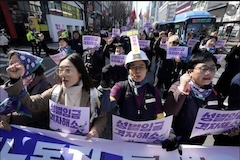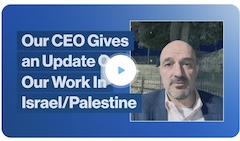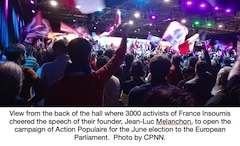Celebrations and protests marked International Women’s Day around the world on March 8.
CPNN carried photos from many of the these events.
In Europe, they came from Albania, Belgium, England, France, Germany, Greece, Italy, Kosovo, Latvia, Malta, Montenegro, Netherlands, Portugal, Romania, Russia, Serbia, Spain and Ukraine.
In Asia and the Pacific, from Afghanistan, Australia, Bangladesh, Cambodia, China, India, Indonesia, Japan, Kazakhstan, Kyrgyzstan, Malaysia, North Korea, Pakistan, Philippines, South Korea, Thailand and Vietnam.
In Africa and the Middle East, from Algeria, Azerbaijan, Cameroon, Côte D’Ivoire, Democratic Republic of Congo, Iraq, Israel, Kenya, Lebanon, Mali, Morocco, Palestine, Senegal, South Africa, Tunisia, Turkey and Uganda.
In the Americas, from Argentina, Bermuda, Bolivia, Brazil, Canada, Chile, Colombia, Ecuador, Guatemala, Honduras, Mexico, Panama, Peru, Puerto Rico, United Nations, United States and Venezuela.
In the capitalist countries, the events were mostly protests and demands for women’s rights in the face of widespread discrimination and violence against women, including criminal prosecution for abortion. Many events condemned in particular the violence against women in Palestine and Israel in recent months.
In many of the socialist and former socialist countries, the events were celebrations rather than protests. This was the case in Russia, China, Kyrgyzstan, North Korea, Cambodia, and Vietnam. this reflects the history of the day, which was initiated by socialist organizations at the beginning of the last century, and then celebrated primarily by the socialist movement and communist countries until its adoption by the United Nations in 1977.
This year the United Nations celebrated the Day with the slogan “Invest in women to accelerate progress.” They criticized an “alarming lack of financing” for achieving gender equality: “Feminist organizations are leading efforts to tackle women’s poverty and inequality. However, they are running on empty, receiving a meagre 0.13 per cent of total official development assistance.”
The Women’s International League for Peace and Freedom, founded to oppose World War I, and boasting the Nobel Peace Prize to two of its founding members, dedicated their celebration of the day to solidarity with the people of Palestine, concluding that “the world sees Gaza as a global front against the rule of oppression, colonialism, and tyranny, so they act in solidarity with Gazans and for justice for all including themselves.”
The organization, The Warriors of Peace, also condemned the violence against women in israel and Palestine, and added reference to violence against women in many other regions of the world. They wrote that “This International Women’s Day has a special flavor. We know to what extent wars and conflicts can destroy struggles and weaken achievements. We, The Warriors of Peace, are convinced that women, when they unite, form the most powerful shield against the destruction of the world. We are the resistance. We are the ones who hold on, who stay standing . . . Feminism is justice, equality and dignity for all. It is the refusal of assignment and division. Feminism is peace.”
As discussed in the blog this month, “we are entering an era of economic and political contradictions that will lead to revolutionary change. Insofar as women take leadership, we have a greater chance that the change will lead to a culture of peace.”
|
WOMEN’S EQUALITY |
HUMAN RIGHTS |
SUSTAINABLE DEVELOPMENT |
FREE FLOW OF INFORMATION |
|
DISARMAMENT & SECURITY |
EDUCATION FOR PEACE |
TOLERANCE & SOLIDARITY |
DEMOCRATIC PARTICIPATION |







